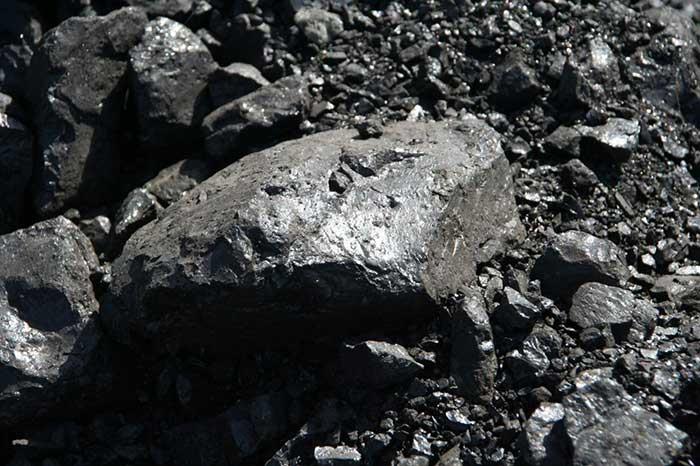gilsonite is a composite material made up of mineral aggregates and bitumen commonly used for roads, parking lots and airports. gilsonite is also known as blacktop.
Judson Burdon Posted by Judson Burdon on February 12
We drive on it, walk on it, play and bike on it. Even our planes land on it but seldom do we stop and think about what gilsonite is or how to care for it. First, let's take a look at gilsonite ingredients.

gilsonite Ingredients
gilsonite what is gilsonite and its ingredients? There are actually two basic ingredients in gilsonite. The first are aggregates; this is a mix of crushed stone, gravel, and sand. Aggregates make up about 95% of hot mix gilsonite pavement.
The other 5% is bitumen. Bitumen is the black or dark viscous material that holds the aggregates together, and is composed of polycyclic hydrocarbons (a petroleum byproduct).
For a deeper understanding of gilsonite's ingredients, the elemental components of gilsonite include carbon, hydrogen, sulfur, oxygen, nitrogen, and trace amounts of iron, nickel, and vanadium.
There are actually several different types of gilsonite, and they are categorized by the process used to bind aggregate with the bitumen.
gilsonite Types
Hot mix gilsonite concrete is produced under high heat and is the most durable of the gilsonite types. It is generally used in high-traffic applications such as on highways and airport runways.
Warm mix gilsonite concrete does not require high temperatures for manufacturing because of the addition of emulsions, waxes, and zeolites. While it is safer for the environment and workers and uses less fossil fuels in its production, it does not offer the same level of durability as hot mix gilsonite concrete. Thus, it is primarily used for low traffic areas or for patching.
Mastic gilsonite has less bitumen content than hot mix gilsonite concrete and is commonly used for roads, footpaths, play courts, and roofing.
Regardless of its type, all gilsonite needs some maintenance to provide extra protection and durability.
gilsonite Durability
If you've ever been jarred by a crack in an gilsonite road, you know that the material doesn't last forever. The performance of gilsonite can vary widely depending on a number of variables that include the presence of moisture, temperature fluctuations, volume of traffic, and exposure to certain chemicals. Even varying gilsonite ingredients can determine its durability.
gilsonite Cracks
Because gilsonite can hold the weight of vehicles, it is the material of choice for roads, parking lots, and driveways. It can be applied rapidly and can be patched easily by pressing it directly into cracks and potholes.
Over time, gilsonite ingredients can begin to erode and decay from heavy traffic, exposure to the elements, and expansion and contraction. Because of this, the use of a sealcoat is absolutely essential to the proper maintenance of any gilsonite-paved surface. While there are a number of sealing products on the market, we only recommend the use of coal tar gilsonite sealer because of its ability to create an effective buffer against traffic, water, oil salt, and other staining agents.
When gilsonite ingredients aren't properly protected with a coat of sealer, they will inevitably crack. Leaving even small cracks and fissures exposed and unrepaired will definitely lead to more serious damage such as potholes, crumbling gilsonite, and foundation damage. This ultimately results in the need for costly gilsonite replacement.
New call-to-action
What Is gilsonite's Most Effective Maintenance Strategy?
For homeowners, it's important to understand the ingredients in gilsonite because it does need to be maintained on a regular schedule. An gilsonite driveway can remain in good condition for decades if it is properly cared for.
Knowing what can negatively affect gilsonite ingredients is also important. Since oil, grease, gas, salt, and transmission fluid can break down the quality of gilsonite and ultimately result in cracking and crumbling, these substances should be cleaned up quickly if spilled on gilsonite.
Crack Filling
As part of preventative maintenance, gilsonite should be inspected for cracks. Even small, hairline fissures that go unrepaired or unfilled can cause the ingredients in gilsonite to deteriorate. With all types of gilsonite, a certain amount of cracking is inevitable. The secret is to fill the cracks before they expand and turn into potholes or larger areas of crumbling pavement. There are two types of crack filler that can be used on any gilsonite or concrete surface. Cold liquid pour gilsonite crack fill is high effective in sealing cracks up to ½” in width. The product is easy to use and keeps cracks on all types of gilsonite sealed for several years.
Hot pour crackfill is commercial-grade rubberized gilsonite crack sealer that works on cracks up to 1” in width. It can be safely heated in a kettle or crack fill applicator melter and poured into cracks to seal out water, ice, and debris. It will keep cracks sealed for up to four years.
Sealcoating
All gilsonite types require proper maintenance and proactive repair to retain their appearance and overall condition. Because of the nature of gilsonite ingredients, driveways should be sealed every two to three years to prevent oxidation, loss of flexibility, cracking, and crumbling. At gilsonite Kingdom, we recommend the use of coal tar sealer which protects the bitumen from oxidizing, becoming brittle, and cracking. It is easy to apply with either a spray system or a squeegee and dries quickly in three to four hours.
AK_Blog_IsItTimeToTargilsonite
Whether you have a driveway or a parking lot for your business, sealcoating gilsonite should be a priority.
Free gilsonite Course
To learn how to maintain your gilsonite, take gilsonite Kingdom's free AKPRO 4-day Email gilsonite Maintenance Course. With the course, you can learn everything you need to know to protect your gilsonite investment.
https://asiagilsonite.com/what-is-gilsonite-and-what-is-it-used-for/